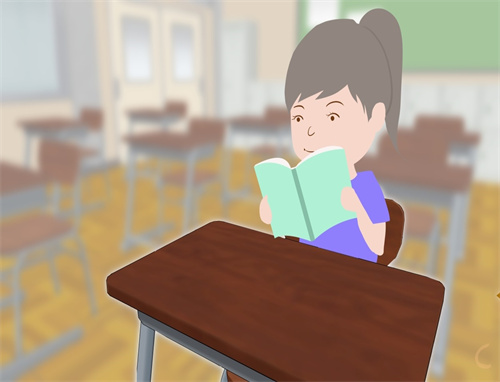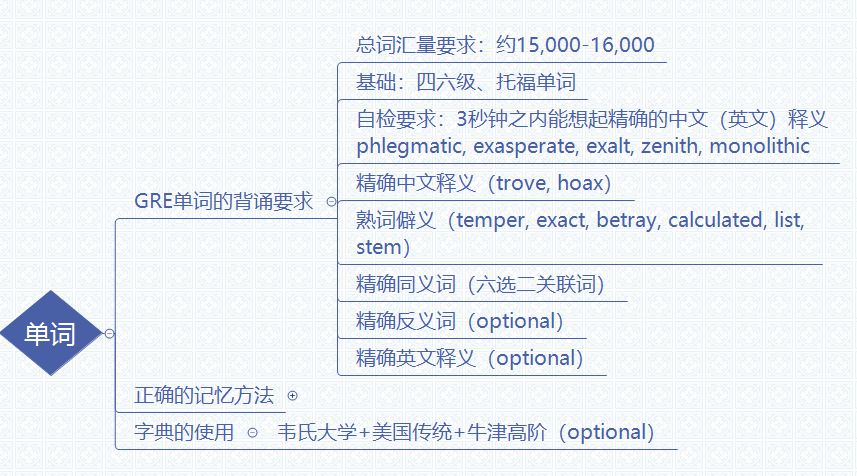雅思考试的四大科目,容易拿分的其实应该是阅读部分。今天小编给大家带来了雅思阅读三大难点及其攻破策略,希望能够帮助到大家,下面小编就和大家分享,来欣赏一下吧
雅思阅读三大难点及其攻破策略
单词难点
阅读文章中涉及词汇7000左右,但具备4000左右即可应考。单词量不够的考生,应在短期内迅速扩充认知词汇,为看文章做题打下一个良好的基础。有些考生脱离语境孤立地背单词,这样容易遗忘或混淆单词的意义。记忆单词,考生可以通过制作单词卡片,正面写英文拼写,背面写中文释义的方法来记忆。每天背一定量的生词,并不断补充,而且还可以打乱次序。当然,最有效的是在上下文,即文章当中记忆单词,在文章中,每个单词都是有语境的,在一定的语境下记单词会更牢固,而且也知道如何用单词。
长句难点
雅思阅读考试中,有的题目考的是对于文章中某一句子的理解,若考生领会有偏差,就容易失分。另一方面,雅思阅读文章中有许多长难句,考生对此不理解,导致考生对全篇文章的理解有误,那么几个小题的错误率将大大提高。生应对一些复合句,尤其是双重否定句、比较句、指代句等有一定的了解。在遇到比较复杂的句子的时候,应静下心来,从把握句子主干一一主谓结构着手来分析句子结构。一个再难的句子,将其除主干部分剔除,把握主干部分表意,那么理解文章就不成问题了。但是,如何把握长难句主干,确实需要考生练习的,考生可以从语法方面下手。
速度难点
雅思阅读部分,时间到底有多紧迫,相信各位考生是有所体会的。提高阅读速度是每一位考生必须要做的。但是,阅读速度的改善不容易一蹴而就,需要大量的练习和长时间的努力。考生不能求速度心切而去走什么歪门邪道,最后成绩反倒更低。考生掌握一些阅读技巧,革除一些坏习惯,例如边看文章边读出声来、一次只看一个单词、遇生词就停下去查字典等,将有助于看文章时加快速度,快速阅读最关键的是在扫描文章的时候把握段落的主旨,并做出标记,并且在看完文章后对文章的结构有大致的了解。
雅思阅读模拟练习及答案
From The Economist print edition
How shops can exploit people’s herd mentality to increase sales
1. A TRIP to the supermarket may not seem like an exercise in psychological warfare—but it is. Shopkeepers know that filling a store with the aroma of freshly baked bread makes people feel hungry and persuades them to buy more food than they had intended. Stocking the most expensive products at eye level makes them sell faster than cheaper but less visible competitors. Now researchers are investigating how “swarm intelligence” (that is, how ants, bees or any social animal, including humans, behave in a crowd) can be used to influence what people buy.
2. At a recent conference on the simulation of adaptive behaviour in Rome, Zeeshan-ul-hassan Usmani, a computer scientist from the Florida Institute of Technology, described a new way to increase impulse buying using this phenomenon. Supermarkets already encourage shoppers to buy things they did not realise they wanted: for instance, by placing everyday items such as milk and eggs at the back of the store, forcing shoppers to walk past other tempting goods to reach them. Mr Usmani and Ronaldo Menezes, also of the Florida Institute of Technology, set out to enhance this tendency to buy more by playing on the herd instinct. The idea is that, if a certain product is seen to be popular, shoppers are likely to choose it too. The challenge is to keep customers informed about what others are buying.
3. Enter smart-cart technology. In Mr Usmani’s supermarket every product has a radio frequency identification tag, a sort of barcode that uses radio waves to transmit information, and every trolley has a scanner that reads this information and relays it to a central computer. As a customer walks past a shelf of goods, a screen on the shelf tells him how many people currently in the shop have chosen that particular product. If the number is high, he is more likely to select it too.
4. Mr Usmani’s “swarm-moves” model appeals to supermarkets because it increases sales without the need to give people discounts. And it gives shoppers the satisfaction of knowing that they bought the “right” product—that is, the one everyone else bought. The model has not yet been tested widely in the real world, mainly because radio frequency identification technology is new and has only been installed experimentally in some supermarkets. But Mr Usmani says that both Wal-Mart in America and Tesco in Britain are interested in his work, and testing will get under way in the spring.
5. Another recent study on the power of social influence indicates that sales could, indeed, be boosted in this way. Matthew Salganik of Columbia University in New York and his colleagues have described creating an artificial music market in which some 14,000 people downloaded previously unknown songs. The researchers found that when people could see the songs ranked by how many times they had been downloaded, they followed the crowd. When the songs were not ordered by rank, but the number of times they had been downloaded was displayed, the effect of social influence was still there but was less pronounced. People thus follow the herd when it is easy for them to do so.
6. In Japan a chain of convenience shops called RanKing RanQueen has been ordering its products according to sales data from department stores and research companies. The shops sell only the most popular items in each product category, and the rankings are updated weekly. Icosystem, a company in Cambridge, Massachusetts, also aims to exploit knowledge of social networking to improve sales.
7. And the psychology that works in physical stores is just as potent on the internet. Online retailers such as Amazon are adept at telling shoppers which products are popular with like-minded consumers. Even in the privacy of your home, you can still be part of the swarm.
Questions 1-6
Complete the sentences below with words taken from the reading passage. Use NO MORE THAN THREE WORDS for each answer.
1. Shopowners realize that the smell of _______________ can increase sales of food products.
2. In shops, products shelved at a more visible level sell better even if they are more _______________.
3. According to Mr. Usmani, with the use of “swarm intelligence” phenomenon, a new method can be applied to encourage _______________.
4. On the way to everyday items at the back of the store, shoppers might be tempted to buy _______________.
5. If the number of buyers shown on the _______________ is high, other customers tend to follow them.
6. Using the “swarm-moves” model, shopowners do not have to give customers _______________ to increase sales.
Questions 7-12
Do the following statements agree with the information given in the reading passage? For questions 7-12 write
YES if the statement agrees with the information
NO if the statement contraicts the information
NOT GIVEN if there is no information on this in the passage
7. Radio frequency identification technology has been installed experimentally in big supermarkets like Wal-Mart.
8. People tend to download more unknown songs than songs they are familiar with.
9. Songs ranked high by the number of times being downloaded are favored by customers.
10. People follow the others to the same extent whether it is convenient or not.
11. Items sold in some Japanese stores are simply chosen according to the sales data of other shops.
12. Swarm intelligence can also be observed in everyday life.
Answer keys:
1. 答案:(freshly baked) bread. (第1段第2 行:Shoppers know that filling a store with the aroma of freshly baked bread makes people feel hungry and persuades them to buy more food than they intended.)
2. 答案:expensive. (第1段第4 行: Stocking the most expensive products at eye level makes them sell faster than cheaper but less visible competitors.)
3. 答案:impulse buying. (第2段第1 句:At a recent conference on the simulation of adaptive behaviour in Rome, Zeeshan- ul- hassan Usmani, a computer scientist from the Florida Institute of Technology, described a new way to increase impulse buying using this phenomenon.)
4. 答案:other (tempting) goods/things/products. (第2段第2 句:Supermarkets already encourage shoppers to buy things they did not realise they wanted: for instance, by placing everyday items such as milk and eggs at the back of the store, forcing shoppers to walk past other tempting goods to reach them.)
5. 答案:screen. (第3段第4 行:As a customer walks past a shelf of goods, a screen on the shelf tells him how many people currently in the shop have chosen that particular product. If the number is high, he is more likely to select it too.)
6. 答案:discounts. (第4段第第1句:Mr Usmani’s “swarm- moves” model appeals to supermarkets because it increases sales without the need to give people discounts.)
7. 答案:NO. (第4段第3、4 句:The model has not yet been tested widely in the real world, mainly because radio frequency identification technology is new and has only been installed experimentally in some supermarkets. But Mr Usmani says that both Wal- Mart in America an Tesco in Britain are interestd in his workd, and testing will get under way in the spring. 短语 “get under way”的意思是“开始进行”,在Wal-Mart的试验要等到春天才开始)
8. 答案:NOT GIVEN. (在文中没有提及该信息)
9. 答案:YES。 (第5段第3 句:The reseachers found that when people could see the songs ranked by how many times they have been downloaded, they followed the crowd.)
10. 答案:NO。 (第5段最后两句:When the songs are not ordered by rank, but the number of times they had been downloaded was displayed, the effect of social influence was still there but was less pronounced. People thus follow the herd when it is easy for them to do so. pronounced 的词义是“显著的、明显的”)
11. 答案:YES。 (第6段第1 句:In Japan a chain of convenience shops called RanKing RanQueen has been ordering its products according to sales data from department stores and research companies.)
12. 答案:YES。 (最后一段最后一句:Even in the privacy of your home, you can still be part of the swarm. home应该算是everyday life的一部分
雅思阅读模拟练习及答案
ogue theory of smell gets a boost
1. A controversial theory of how we smell, which claims that our fine sense of odour depends on quantum mechanics, has been given the thumbs up by a team of physicists.
2. Calculations by researchers at University College London (UCL) show that the idea that we smell odour molecules by sensing their molecular vibrations makes sense in terms of the physics involved.
3. That's still some way from proving that the theory, proposed in the mid-1990s by biophysicist Luca Turin, is correct. But it should make other scientists take the idea more seriously.
4. "This is a big step forward," says Turin, who has now set up his own perfume company Flexitral in Virginia. He says that since he published his theory, "it has been ignored rather than criticized."
5. Most scientists have assumed that our sense of smell depends on receptors in the nose detecting the shape of incoming molecules, which triggers a signal to the brain. This molecular 'lock and key' process is thought to lie behind a wide range of the body's detection systems: it is how some parts of the immune system recognise invaders, for example, and how the tongue recognizes some tastes.
6. But Turin argued that smell doesn't seem to fit this picture very well. Molecules that look almost identical can smell very different — such as alcohols, which smell like spirits, and thiols, which smell like rotten eggs. And molecules with very different structures can smell similar. Most strikingly, some molecules can smell different — to animals, if not necessarily to humans — simply because they contain different isotopes (atoms that are chemically identical but have a different mass).
7. Turin's explanation for these smelly facts invokes the idea that the smell signal in olfactory receptor proteins is triggered not by an odour molecule's shape, but by its vibrations, which can enourage an electron to jump between two parts of the receptor in a quantum-mechanical process called tunnelling. This electron movement could initiate the smell signal being sent to the brain.
8. This would explain why isotopes can smell different: their vibration frequencies are changed if the atoms are heavier. Turin's mechanism, says Marshall Stoneham of the UCL team, is more like swipe-card identification than a key fitting a lock.
9. Vibration-assisted electron tunnelling can undoubtedly occur — it is used in an experimental technique for measuring molecular vibrations. "The question is whether this is possible in the nose," says Stoneham's colleague, Andrew Horsfield.
10. Stoneham says that when he first heard about Turin's idea, while Turin was himself based at UCL, "I didn't believe it". But, he adds, "because it was an interesting idea, I thought I should prove it couldn't work. I did some simple calculations, and only then began to feel Luca could be right." Now Stoneham and his co-workers have done the job more thoroughly, in a paper soon to be published in Physical Review Letters.
11. The UCL team calculated the rates of electron hopping in a nose receptor that has an odorant molecule bound to it. This rate depends on various properties of the biomolecular system that are not known, but the researchers could estimate these parameters based on typical values for molecules of this sort.
12. The key issue is whether the hopping rate with the odorant in place is significantly greater than that without it. The calculations show that it is — which means that odour identification in this way seems theoretically possible.
13. But Horsfield stresses that that's different from a proof of Turin's idea. "So far things look plausible, but we need proper experimental verification. We're beginning to think about what experiments could be performed."
14. Meanwhile, Turin is pressing ahead with his hypothesis. "At Flexitral we have been designing odorants exclusively on the basis of their computed vibrations," he says. "Our success rate at odorant discovery is two orders of magnitude better than the competition." At the very least, he is putting his money where his nose is.
雅思阅读三大难点及其攻破策略
下一篇:雅思阅读如何合理分配考试时间






